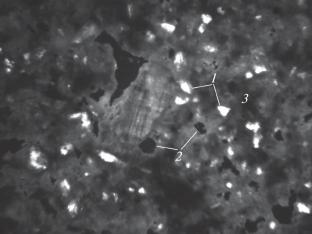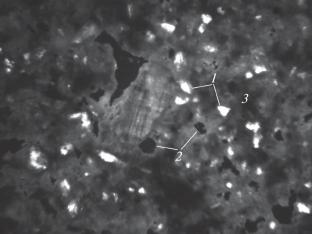利用钴精矿废料生产陶瓷制品的潜力
IF 0.6
4区 工程技术
Q4 ENGINEERING, CHEMICAL
引用次数: 0
摘要
研究了烧成温度对陶瓦钴厂含砷废料和粘土基混合物制备的陶瓷样品性能的影响。将混合物的水分含量从10%增加到15%,导致陶瓷样品的强度显著增加。在850℃时,试样的抗压强度由14 MPa提高到21 MPa。在陶瓷样品中发现了新的相(andradite和硅灰石),可能有助于强度的增加。砷在烧制过程中以稳定的砷酸盐的形式并入硅酸盐结构中。本文章由计算机程序翻译,如有差异,请以英文原文为准。


Potential for Using Cobalt Concentrate Waste in the Production of Ceramic Products
The effect of firing temperature on the properties of ceramic samples produced from clay-based mixtures with arsenic-containing waste from the Tuvacobalt plant was examined. An increase in the moisture content of the mixture from 10 to 15% resulted in a significant increase in the strength of the ceramic samples. At 850°C, the compressive strength of the samples increased from 14 to 21 MPa. New phases (andradite and wollastonite) were identified in the ceramic samples and likely contributed to the increase in strength. Arsenic was shown to be incorporated into silicate structures during firing in the form of stable arsenates.
求助全文
通过发布文献求助,成功后即可免费获取论文全文。
去求助
来源期刊
CiteScore
1.20
自引率
25.00%
发文量
70
审稿时长
24 months
期刊介绍:
Theoretical Foundations of Chemical Engineering is a comprehensive journal covering all aspects of theoretical and applied research in chemical engineering, including transport phenomena; surface phenomena; processes of mixture separation; theory and methods of chemical reactor design; combined processes and multifunctional reactors; hydromechanic, thermal, diffusion, and chemical processes and apparatus, membrane processes and reactors; biotechnology; dispersed systems; nanotechnologies; process intensification; information modeling and analysis; energy- and resource-saving processes; environmentally clean processes and technologies.

 求助内容:
求助内容: 应助结果提醒方式:
应助结果提醒方式:


